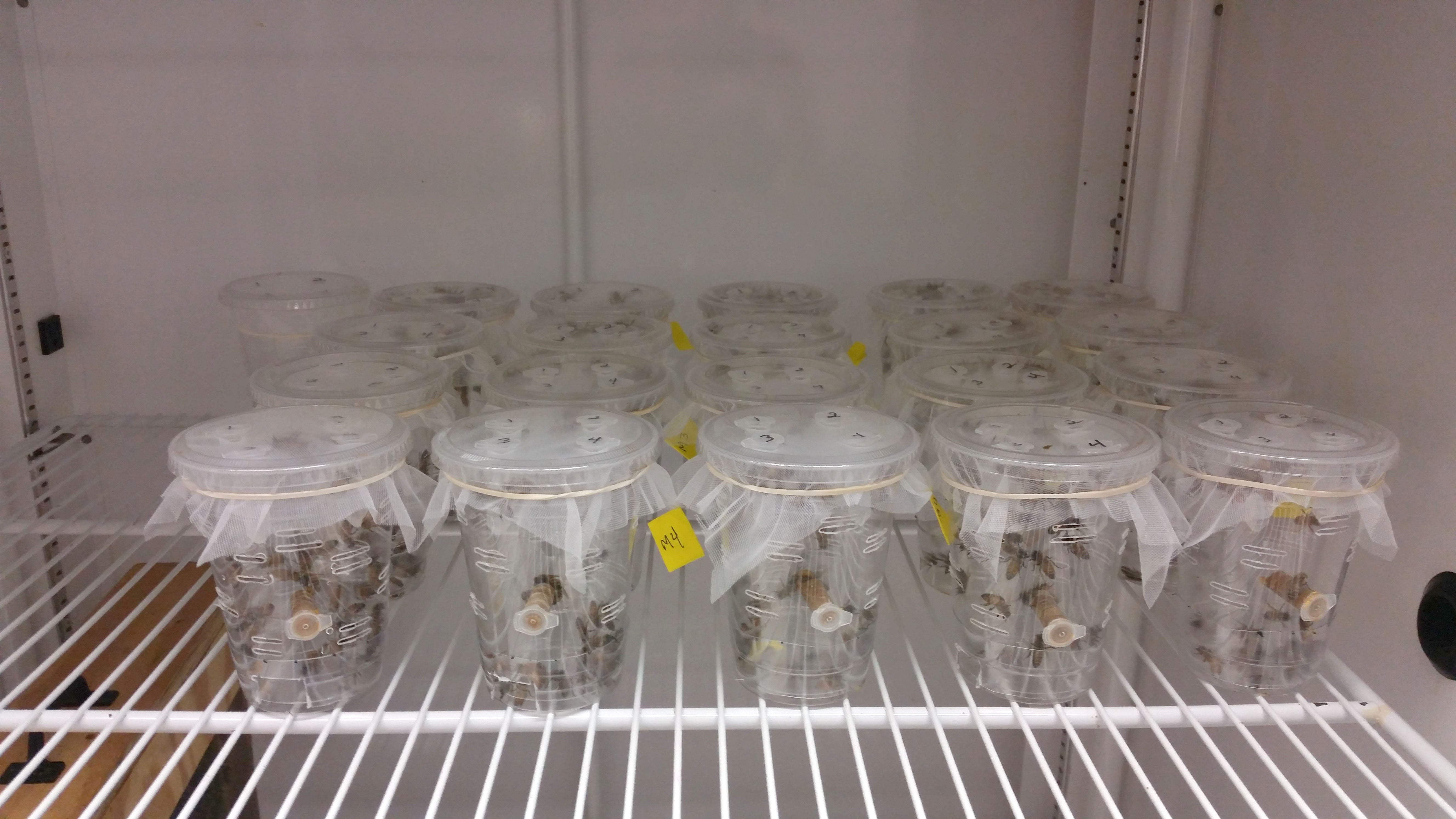In the 1970s, laboratory honey bees generally lived for over a month. But now, according to new research published in Scientific Reports, lab-kept bees only live about two weeks.
The halving of the insects’ lifespan (from 34.3 days in the 1970s to 17.7 days in the 2010s) is just the latest worrying sign for a species that plays a crucial role in our environment. Honey bees have suffered huge population losses in recent years.
The recent findings came about when a team was investigating how caged bees fared on different types of water (deionized, deionized with a pinch of salt, and tap). They found that providing the bees with various types of water, rather than just sugar syrup, prolonged the animal’s median lifespans. But during the research that contributed to those findings, the team found the startling difference between the modern honey bee lifespan and the lifespan documented in the 1970s.
“We’re isolating bees from the colony life just before they emerge as adults, so whatever is reducing their lifespan is happening before that point,” Anthony Nearman, an entomologist at the University of Maryland and lead author of the study, said in a university release.
Honey bees are integral members of most ecosystems because of their role in pollination. Pollination helps plants disperse and propagate and maintains the genetic diversity of populations. Now, it seems it may be the bees’ own lack of genetic diversity that’s harming them.
“This introduces the idea of a genetic component,” Nearman added. “If this hypothesis is right, it also points to a possible solution. If we can isolate some genetic factors, then maybe we can breed for longer-lived honey bees.”

Bees are invaluable for pollination, but the insects are being killed off by pesticides, habitat destruction, disease, and climate change-related factors like drought. The FDA has even produced three antibiotics specifically to protect the “flying dollar bills” from American foulbrood, a bacterial disease that is wiping out entire colonies.
The reduced lifespan for the insect is also in spite of better laboratory treatment of the animals today, borne out of standardised protocols for keeping bees in labs that were developed in the 2000s. “You would think that lifespans would be longer or unchanged, because we’re getting better at this, right?” Nearman said. “Instead, we saw a doubling of mortality rate.”
According to the team’s analysis, the declining lifespan of the bees has correlated with decreased honey production in the United States.
Their next steps are to compare the lifespan trends of American honey bees with international bee colonies; if there are differences, the team can investigate if particular genetics, pesticides, or pathogens might be driving the worrying trend.
More: Honey Bees’ Oddly Hypnotising ‘Shimmering’ Is Actually a Clever Defence
